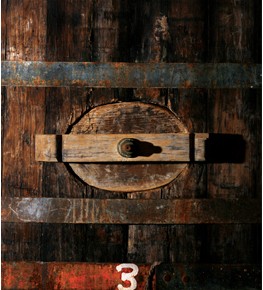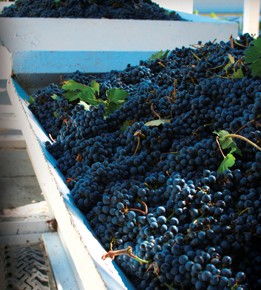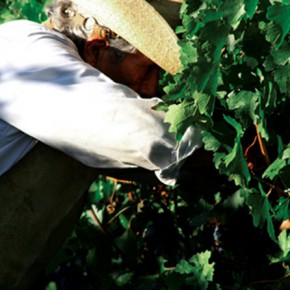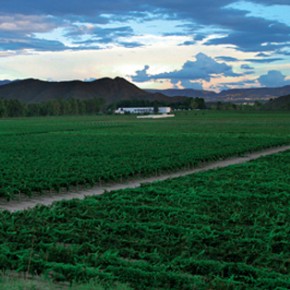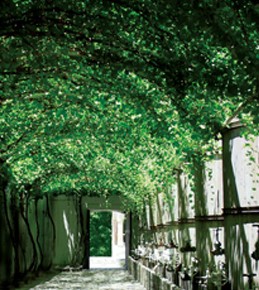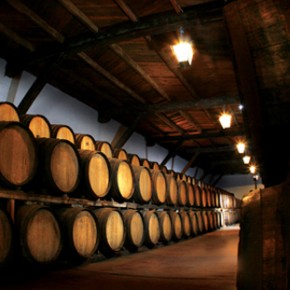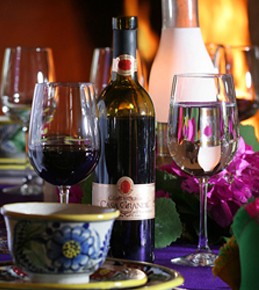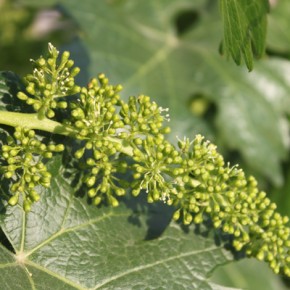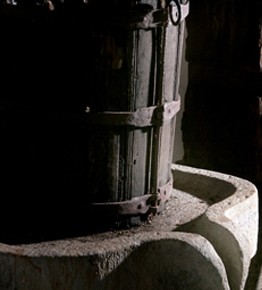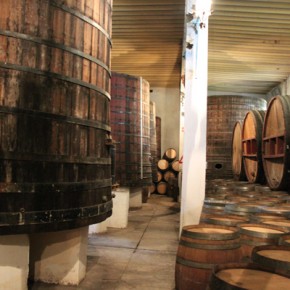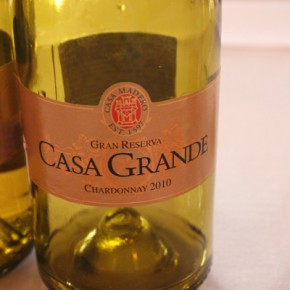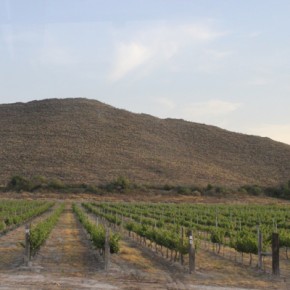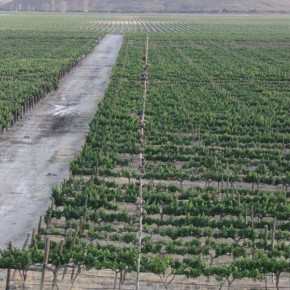It is not a mirage! After having crossed a long desert there appears a miraculous oasis…
In this valley of fertile land crystalline springs abound. The Parras valley is a verdant space in which one forgets that they are surrounded by the semi-desert region of Coahuila. In addition to its water reserve, the Parras valley’s proximity to the Sierra Madre Oriental mountains puts it at an altitude of 1500 meters (4921 feet). The combination of a semi-desert climate paired with the influences of the altitude and mountains of the area provides a microclimate ideal for the culture of the vineyard. The peculiarity of a union of feature such as these has caused some to christen this valley Valle de los Pirineos (Valley of the Pyrenees), after its resemblance to the mountains of the same name that form the border between France and Spain.Both the environmental and climactic aspects of the valley make it a particularly good place to grow wine grapes. Winter temperatures range from -2°C (28°F) at night to 15°C (59°F) during the day. During the summer the sun is generous to the vine-covered land and delivers temperatures ranging from 25°C (77°F) to 30°C (86°F) during the day and from 18°C (64°F) to 20°C (68°F) at night. The coolness of the winter allows for the vine to thoroughly rest while the consistency and sweetness of summer permits a progressive and complete maturation of the grapes. Also, the intimate mixture of calcium carbonate and clay that makes up the soil and subsoil of the valley benefits the cultivation of the grapevines. The clay’s richness helps with vegetation development, allows for the retention of the water until it filters through the calcareous gravel.It’s source of appeal recognized in 1986, the Valle de Parras became the first Mexican winery recognized by the Organización Internacional de la Viña y el Vino (International Organization of Vine and Wine).
The ink of a long story fills your glass
The French word terroir cannot be translated into English or Spanish. To explain its significance we must enter into a discussion of climatology, pedology (the study of soil), sociology, and history. The terroir is, in summary, the joint action of weather, earth, and man. In this way, the vines in the Valle de Parras are a reflection of the skills possessed by the agronomists who cultivated them. But to understand the soul of the vines’ nectar one must understand the history of the people of the valley.Thirsty for gold the conquistadors crossed the Mexican desert. In place of precious metal, however, they found instead the Parras oasis and its abundant wildlife. The Santa Maria Mission of Parras decided to establish itself in the area and produce some of the first wines on the American continent—using native vines. The interaction was not peaceful and the indigenous people of the area soon forced the mission to abandon the site. However, Don Lorenzo García, the mission’s resident, did not want to desert the agricultural benefits of the valley. In 1597 King Felipe II of Spain did Don García the favor of allocating the valley’s land for the purpose of planting vineyards. Apparently, the indigenous people accepted this and left the land and its new occupants in peace.In 1893 the vineyard was purchased by Don Evaristo Madero—the grandfather of President Francisco I Madero—a key player in Mexico’s 1910 Revolution. The present owner, José Milmo, is a direct descendent of the Madero family. The illustrious family name is now that of the vineyard too: Casa Madero. The family home has been converted into a divine colonial inn which had been christened San Lorenzo in honor of the creator of the first vine. Having endured various crises such as New Spain’s prohibition of the production of wine in 1699 and the devastation of Phylloxera (a plant louse which pesters vines), Casa Madero has never stopped production and today has the honor of being the oldest vineyard on the continent.
Casa Madero Today
Today Casa Madero is a vineyard of 450 watered hectares planted with European varieties. The red-wine grapes represent 85% of the planted estate including Merlot Shiraz, and Cabernet Sauvignon fruit. The white wines represented are Chardonnay, Chenin Blanc, and Semillón. The final installment missing for the vines at Casa Madero to climb to the top was that of science. Today agricultural engineers and winemakers from the best schools in France form the Casa Madero scientific team. Using updated technological procedures, the winery is keeping up with the times. All of this has lead to the production of award-winning wines winning a cascade of medals in several major international competitions. Casa Madero exports its product to more than 27 countries.
-March 2009
- Casa Madero wine barrel. Photo courtesy of Casa Madero.
- Casa Madero grapes. Photo courtesy of Casa Madero.
- Sierra Madres. Photo courtesy of Casa Madero.
- Harvesting at Casa Madero. Photo courtesy of Casa Madero.
- Vineyards at Casa Madero. Photo courtesy of Casa Madero.
- Vine covered walkway at Casa Madero winery. Photo courtesy of Casa Madero.
- Barrels of wine at Casa Madero winery. Photo courtesy of Casa Madero.
- Casa Madero wines. Photo courtesy of Casa Madero.
- Flowering grapes at Casa Madero winery. Photo by Nisa Salmans.
- Wine barrel at Casa Madero winery. Photo courtesy of Casa Madero.
- Wine barrels at Casa Madero winery. Photo by Nisa Salmans.
- Casa Grande wine. Photo by Nisa Salmans.
- Casa Madero vineyard. Photo by Nisa Salmans.
- Casa Madero vineyard. Photo by Nisa Salmans.
- Flowering grapes. Photo by Nisa Salmans.


